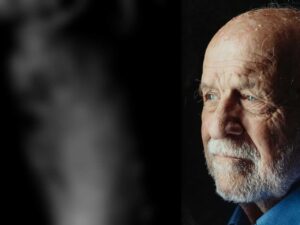Families facing the loss of a loved one often confront unexpected challenges in the probate process. This is specially true when there is no will. This is also especially true for children born outside of marriage. This is also especially true with Texas probates, given the advanced body of probate law in Texas.
These children often have to prove biological relationships to secure their rightful inheritance. When direct DNA testing with the deceased parent isn’t possible, what options remain for those seeking to establish their inheritance rights?
This question becomes particularly relevant when siblings or half-siblings attempt to use genetic testing to establish their relationships through a common parent. Can such testing satisfy the legal burden required by Texas probate courts?
The recent Texas Court of Appeals case, Estate of Jesse Odis Matlock, III (2024 WL 4844979), provides an opportunity to consider the question. It addresses a case involving DNA evidence between half-siblings and what standards apply when establishing inheritance rights with this type of evidence.
Facts & Procedural History
The decedent died in August 2022 in Houston County, Texas. The court determined that the document purporting to be his will failed to satisfy legal requirements. This meant that his estate passed according to Texas intestate succession laws.
The decedent’s son from his second marriage, Dustin, filed an Application to Declare Heirship in November 2022. His application identified five surviving children from the decedent’s two marriages: Jesse IV, Jennifer, and Brandy (who predeceased the decedent) from the first marriage, and Dillon, Dustin, and Dalton from the second marriage with Lisa, the decedent’s surviving spouse.
Dustin’s application also identified Lacey and Ashley as persons who “may claim to be a child of Decedent” but asserted they had no share in the estate. Both women were alleged to be the decedent’s daughters born outside of marriage and shared the same mother.
In March 2023, Lacey, Ashley, and Jesse IV filed an opposition to Dustin’s application. The same day, Lacey filed her own competing Application to Determine Heirship, which included herself and Ashley among the decedent’s children and heirs.
In April 2023, Lacey, Ashley, and Jesse IV voluntarily underwent genetic testing. The May 2023 LabCorp testing report concluded that Lacey and Ashley were half-siblings of Jesse IV with a probability of 97.98%. At the January 2024 hearing, the probate court admitted this genetic testing report over Dustin’s objections.
Several witnesses testified that the decedent had acknowledged Lacey and Ashley as his children, maintained relationships with them, and provided financial support throughout their lives. After evaluating all evidence in the probate litigation, the probate court determined that Lacey and Ashley were indeed the decedent’s heirs. Dustin appealed this judgment.
Texas Inheritance Rights for Children Born Outside of Marriage
Section 201.001 of the Texas Estates Code establishes that when someone dies without a will, their property vests immediately in their heirs. However, determining who qualifies as an heir sometimes requires judicial intervention. This is often the case for children born outside of marriage.
These judicial heirship proceedings are common–and essentially required in every probate when there is no will.
For children born within a marriage, paternity is generally presumed. However, for children born outside of marriage, Section 201.052 of the Texas Estates Code creates additional requirements to establish paternity for inheritance purposes.
Under this section, a child born outside of marriage may inherit from their father if the relationship is established through various means, including formal acknowledgment, court adjudication, adoption, being named on the birth certificate, court-ordered support, open recognition by the father, or clear and convincing evidence of paternity.
When formal recognition hasn’t occurred during the father’s lifetime, establishing inheritance rights often depends on presenting sufficient evidence of the biological relationship under the “clear and convincing” standard.
Genetic Testing in Texas Heirship Proceedings
Chapter 204 of the Texas Estates Code provides specific procedures for using genetic testing in heirship determinations. These provisions reflect the legislature’s recognition that DNA evidence offers a scientifically reliable method for establishing biological relationships.
Under Section 204.051, the court may order genetic testing on its own motion or must do so upon request by any party to the proceeding. This testing typically involves comparing the DNA of the purported heir with that of the decedent.
But what happens when the decedent’s DNA isn’t available for testing? Section 204.054 addresses this situation by allowing testing of family members if:
- The court finds good cause exists
- The need for testing outweighs the legitimate interests of the individuals to be tested
This provision becomes especially important in cases like Matlock, where direct testing with the decedent was impossible. In such situations, testing between siblings or half-siblings can provide evidence of relationships through a common parent.
Admissibility Requirements for DNA Testing Reports
For genetic testing to be admissible in Texas probate courts, the report must satisfy specific requirements outlined in Section 160.504 of the Texas Family Code, which applies to heirship proceedings through Section 204.101 of the Texas Estates Code.
According to these provisions, a testing report must be:
- In a record signed under penalty of perjury by a laboratory designee
- Accompanied by documentation establishing a reliable chain of custody, including:
- Names and photographs of tested individuals
- Names of those who collected specimens
- Collection locations and dates
- Laboratory receipt information
When these requirements are satisfied, the report becomes self-authenticating and admissible without additional testimony. This streamlines the evidentiary process while ensuring reliability.
In the Matlock case, the Court of Appeals found that the testing report satisfied all these requirements, making it properly admissible over Dustin’s objections about reliability and hearsay.
How Do Courts Interpret DNA Evidence Between Half-Siblings?
Under normal circumstances, Section 160.505 of the Texas Family Code creates a rebuttable presumption of paternity when genetic testing results show at least a 99% probability and a combined paternity index of at least 100 to 1.
However, testing between half-siblings typically produces results with lower statistical certainty than direct paternity testing. In Matlock, the results showed a 97.98% probability that Lacey and Ashley were half-siblings of Jesse IV—close to but not meeting the statutory threshold for presumption.
Does this mean such testing has no value? Section 204.153 of the Estates Code specifically addresses this situation, providing that when genetic tests do not definitively identify or exclude a tested individual:
- The court may not dismiss the heirship proceeding based solely on those results
- The court must admit the genetic testing results as evidence
This provision recognizes that even inconclusive DNA evidence provides valuable information when considered alongside other evidence.
Does Voluntary Testing Affect Admissibility?
An interesting aspect of the Matlock case involved Dustin’s argument that the trial court erroneously considered test results from voluntary testing conducted before any court order was issued.
The Court of Appeals rejected this argument, citing Section 160.621 of the Texas Family Code , which explicitly states that “the admissibility of a report of genetic testing… is not affected by whether the testing was performed: (1) voluntarily or under an order of the court… or (2) before or after the date of commencement of the proceeding.”
This provision encourages proactive gathering of evidence by allowing parties to undertake voluntary testing without fear that results will later be deemed inadmissible simply because they weren’t ordered by the court.
Witness Testimony Requirements in Heirship Proceedings
Beyond genetic evidence, Section 202.151 of the Texas Estates Code sets out specific requirements for witness testimony in heirship proceedings. The statute generally requires testimony from two disinterested and credible witnesses regarding the decedent’s heirs and family history.
However, subsection (c) provides an important exception: if the court is satisfied that “after a diligent search was made, only one disinterested and credible witness can be found,” the testimony of that single witness may suffice.
In Matlock, only one clearly disinterested witness (the decedent’s longtime friend) testified. While the trial court did not explicitly find that only one such witness was available, the Court of Appeals applied the implied finding rule—when no findings of fact are requested, appellate courts imply that the trial court made all necessary findings to support its judgment.
The Clear and Convincing Evidence Standard in Paternity Cases
For children born outside of marriage seeking to establish inheritance rights, Section 201.052(d) of the Texas Estates Code requires proof by “clear and convincing evidence”—a heightened standard lying between preponderance of evidence and beyond reasonable doubt.
This standard requires evidence that produces “a firm belief or conviction as to the truth of the allegations” but does not require negating all reasonable doubt or presenting uncontroverted evidence.
How did the Matlock court apply this standard? The Court of Appeals considered the totality of evidence, including:
- The genetic testing showing a 97.98% probability of half-sibling relationship
- Testimony that the decedent had openly acknowledged Lacey and Ashley as his children
- Evidence of financial support provided by the decedent
- Testimony about family gatherings where all children were acknowledged
- The absence of any contrary evidence from Dustin
Together, these elements constituted clear and convincing evidence that Lacey and Ashley were entitled to inherit as the decedent’s biological children.
What Makes Half-Sibling Testing Compelling Evidence?
The Matlock case demonstrates that while half-sibling testing may not create a statutory presumption of paternity, it remains relevant evidence when combined with other indications of a parent-child relationship.
The court found that though the 97.98% probability fell short of creating a rebuttable presumption, it was still competent evidence when considered alongside testimony about the decedent’s acknowledgment and support of Lacey and Ashley.
This approach acknowledges the inherent limitations of genetic testing between half-siblings while still giving appropriate weight to scientific evidence of biological relationships.
The Takeaway
This case provides helps explain how to establish inheritance rights when direct DNA testing with a deceased parent isn’t possible. DNA testing between half-siblings, while not creating a statutory presumption of paternity, can provide compelling evidence when combined with testimony about acknowledgment and support. This is particularly helpful for children born outside of marriage seeking to establish inheritance rights and how the probate courts can consider the totality of evidence when formal statutory requirements cannot be strictly met.
Do you need help with an inheritance or heirship matter in Houston or the surrounding area? We are Houston guardianship attorneys. We help clients navigate the probate process. Call today for a free confidential consultation, 281-219-9090.
Our Houston Probate Attorneys provide a full range of guardianship services to our clients, including helping with litigation involving inheritance rights. Affordable rates, fixed fees, and payment plans are available. We provide step-by-step instructions, guidance, checklists, and more for completing the guardianship process. We have years of combined experience we can use to support and guide you with guardianship and probate matters. Call us today for a FREE attorney consultation.
Disclaimer
The content of this website is for informational purposes only and should not be construed as legal advice. The information presented may not apply to your situation and should not be acted upon without consulting a qualified probate attorney. We encourage you to seek the advice of a competent attorney with any legal questions you may have.











